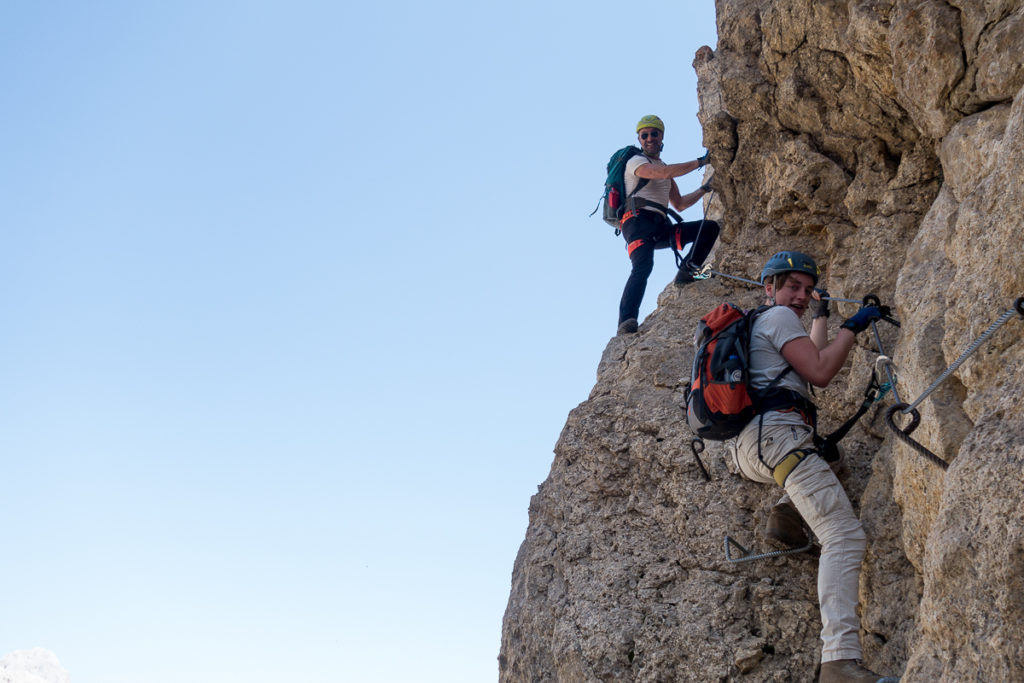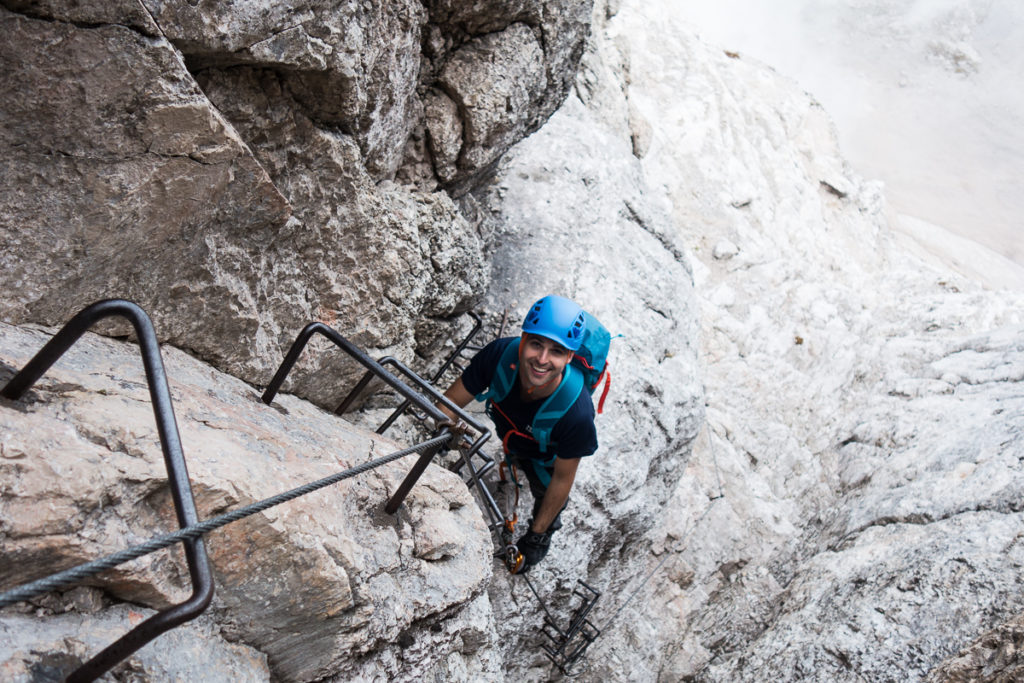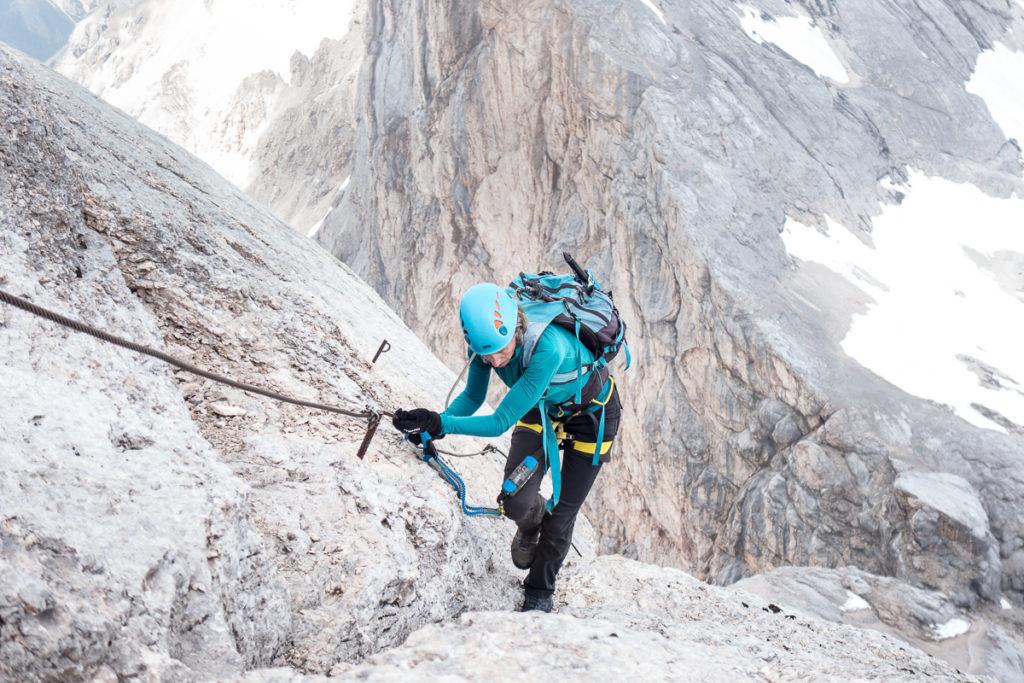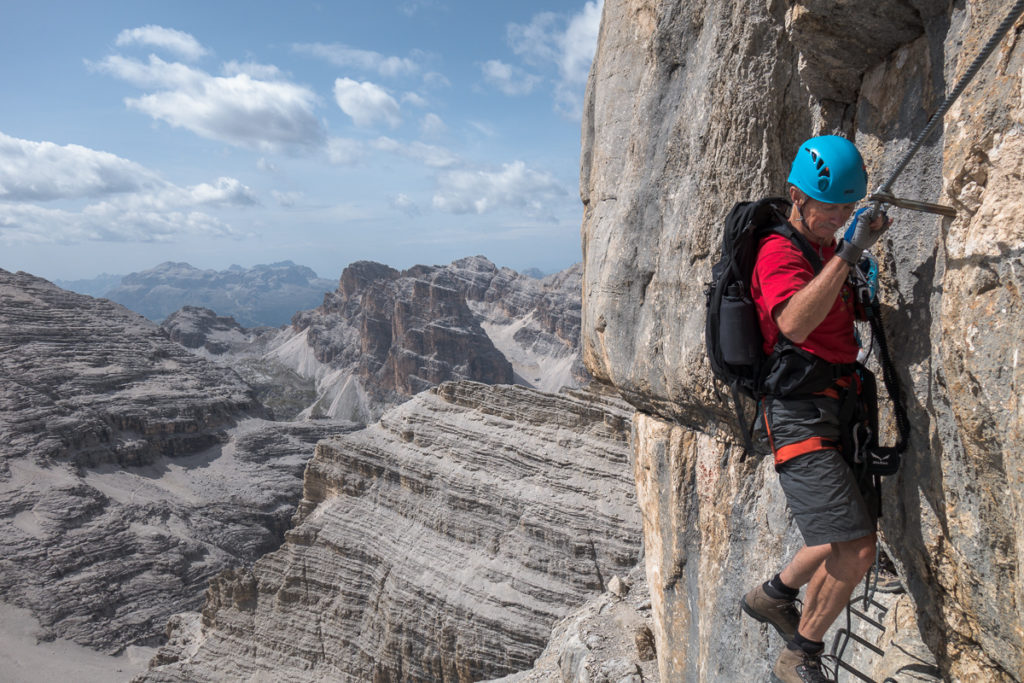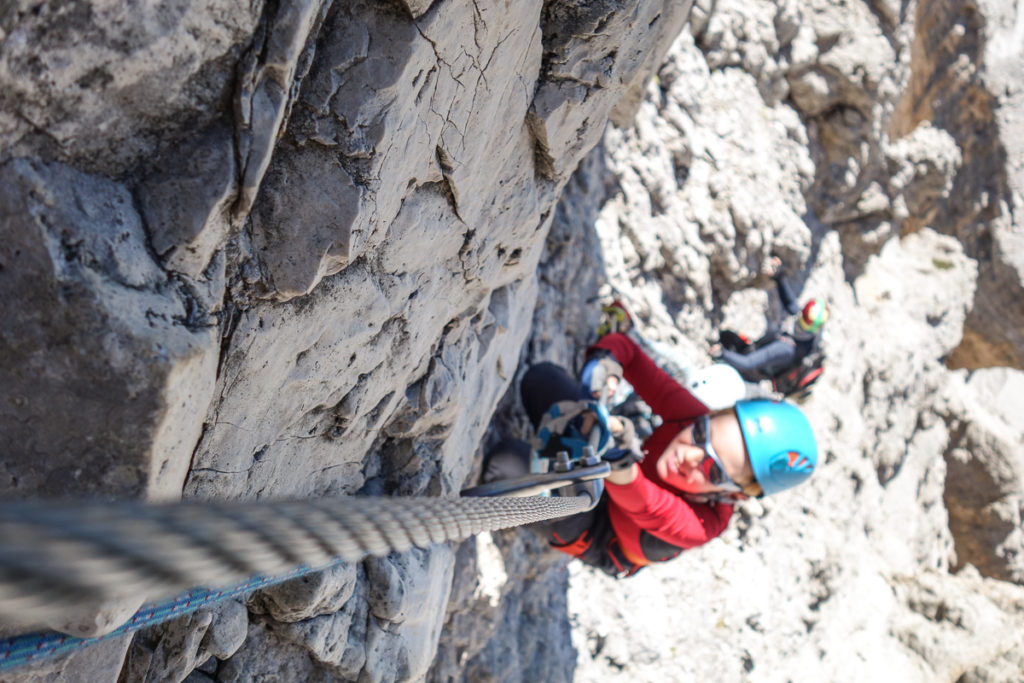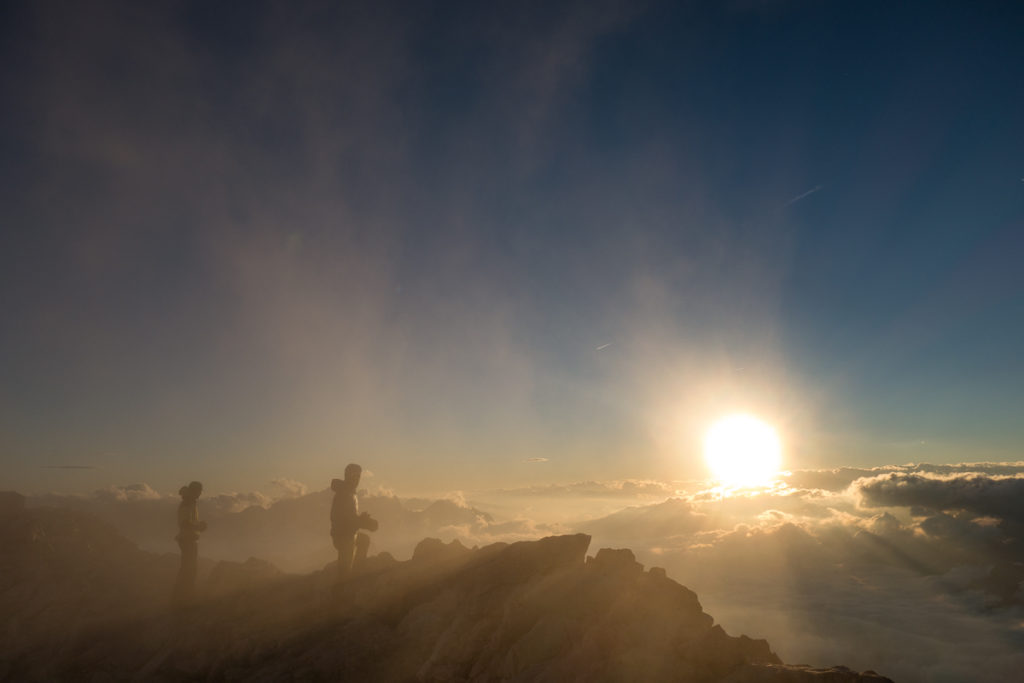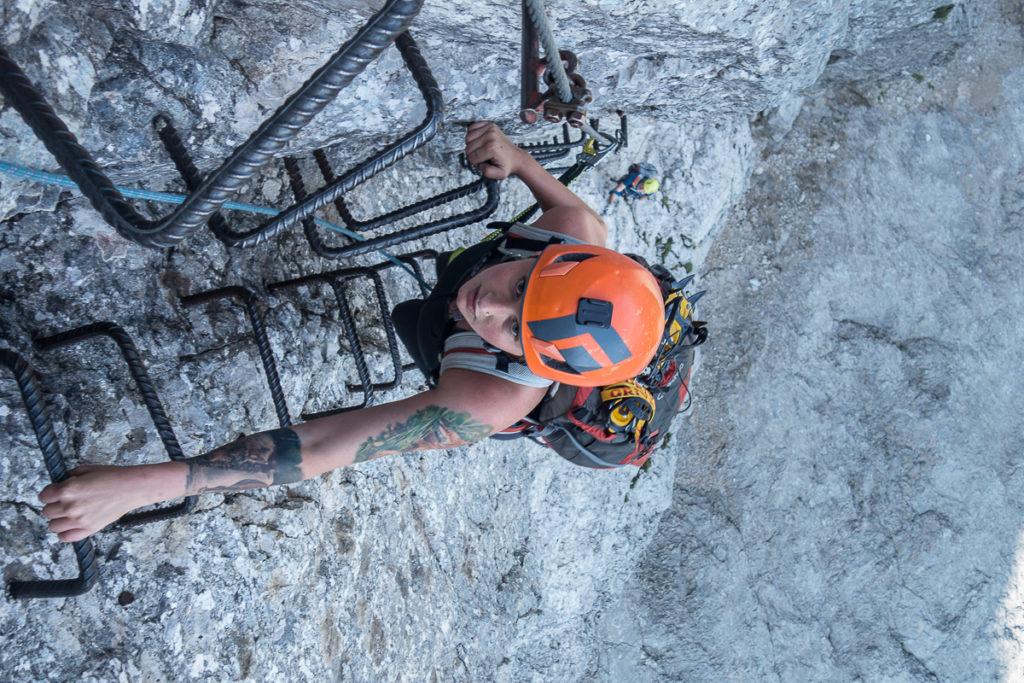Via ferrata: from difficult to extreme in the Dolomites
On this chapter we introduce few examples of high difficult Via Ferrata. These itineraries are suitable for well-trained people who already some experience in the mountains. The Dolomite via ferrata tend to never be technically extreme but very long, exposed and in a severe, alpine environment: these itineraries often present sections of scramble in the lack of the wire, where nerve is mandatory. These Via Ferrata give the opportunity to reach the highest and most important peaks in the Dolomites: Marmolada, Civetta, Tofana and much more. We feel proud to have the chance of showing you these beautiful peaks, and to think about your wellness and safety.

